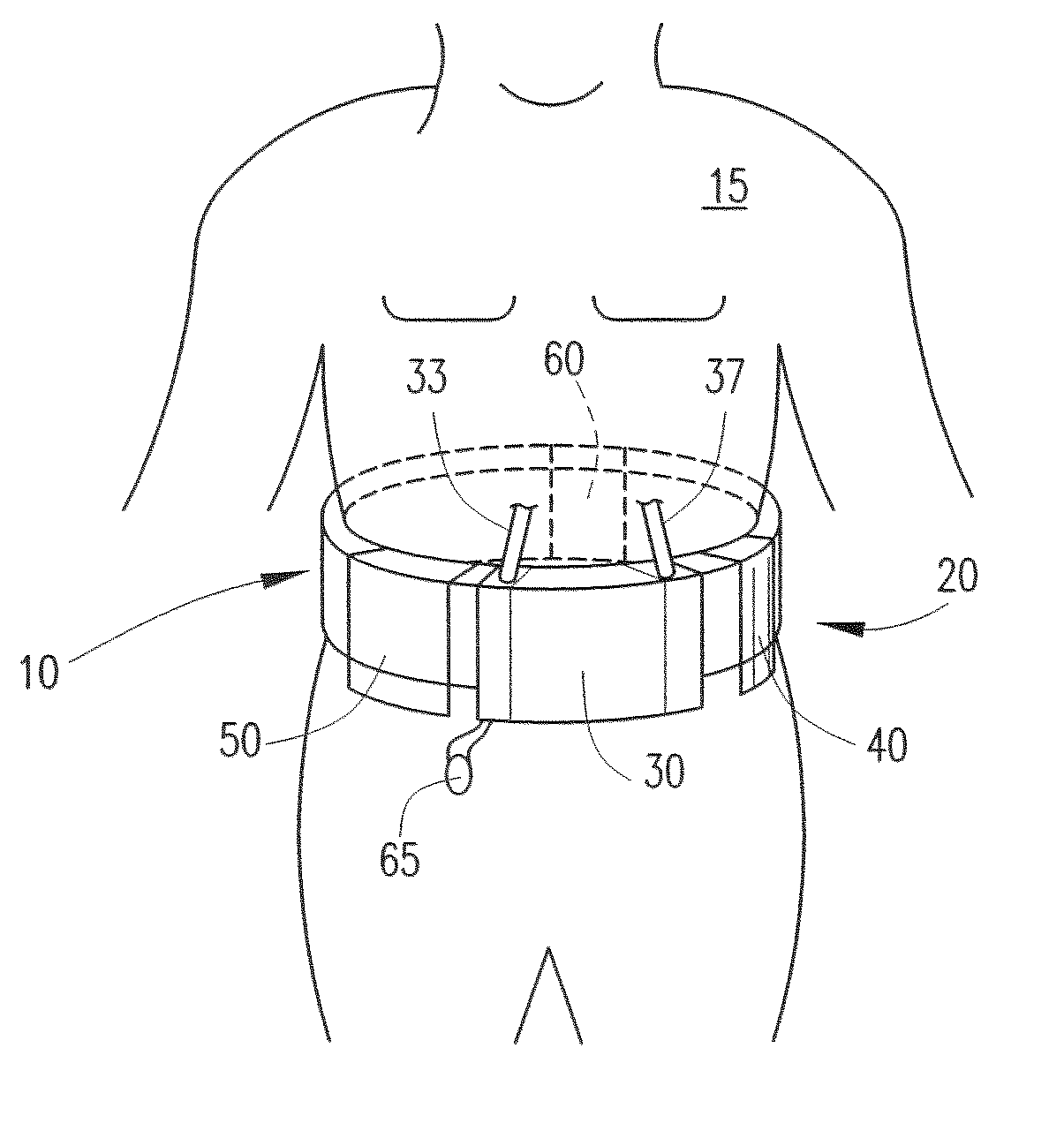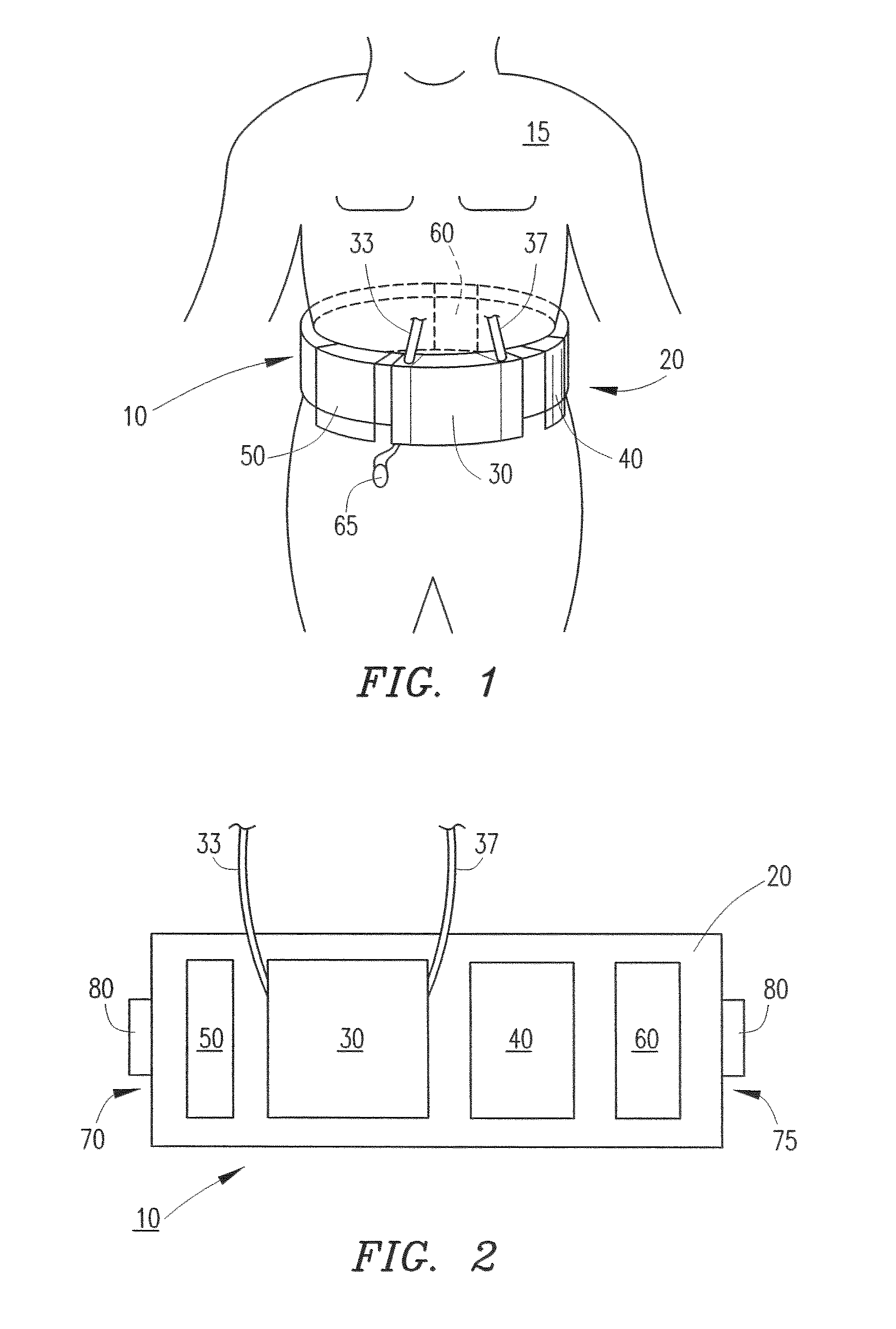Wearable continuous renal replacement therapy device
a technology of renal replacement therapy and wearable parts, which is applied in the direction of medical devices, solvent extraction, separation processes, etc., can solve the problems of limiting the patient's ability to perform normal everyday activities, cumbersome existing crrt machines, and almost impossible daily dialysis
- Summary
- Abstract
- Description
- Claims
- Application Information
AI Technical Summary
Benefits of technology
Problems solved by technology
Method used
Image
Examples
first embodiment
[0040] Referring to FIG. 8, in the sorbent section 40, there are five sorbent cartridges 420, 430, 440, 450, 460 including an activated charcoal cartridge 420, a urease cartridge 430, a zirconium phosphate cartridge 440, a hydrous zirconium oxide cartridge 450 and an activated carbon cartridge 460. Those of ordinary skill in the art will recognize that these sorbents are similar to the sorbents employed by the commercially available Recirculating Dialysis (REDY) System. However, in the REDY System, the sorbents are layers of a single cartridge. By contrast, the sorbents of the present invention are each part of a distinct sorbent cartridge 420, 430, 440, 450, 460 such that each cartridge 420, 430, 440, 450, 460 may, conveniently, be replaced and disposed of independently of the other cartridges 420, 430, 440, 450, 460 if so desired. As one of ordinary skill in the art would understand, activated charcoal, urease, zirconium phosphate, hydrous zirconium oxide and activated carbon are ...
second embodiment
[0041] Referring to FIGS. 9 and 10, in the sorbent section 40, there are a plurality of sorbent cartridges 500, 510, 520, 530, wherein each cartridge 500, 510, 520, 530 includes a plurality of sorbent layers 540, 550, 560, 570, 580: an activated charcoal layer 540, a urease layer 550, a zirconium phosphate layer 560, a hydrous zirconium oxide layer 570 and an activated carbon layer 580. The cartridges 500, 510, 520, 530 may be in series as depicted in FIG. 9 or may be in parallel as depicted in FIG. 10. In this embodiment, the number of sorbent devices may be varied to correspond with different dialysis prescriptions.
[0042] Referring to FIG. 11, each cartridge 500, 510, 520, 530 is a miniature cartridge having a flexible or curved casing 600 adapted to conform to the body contour of the patient. In addition, the body-side wall 610 of each casing 600 is concave to further correspond to bodily curves. The casing 600 can be made of any suitable material having adequate flexibility for ...
PUM
 Login to View More
Login to View More Abstract
Description
Claims
Application Information
 Login to View More
Login to View More - R&D
- Intellectual Property
- Life Sciences
- Materials
- Tech Scout
- Unparalleled Data Quality
- Higher Quality Content
- 60% Fewer Hallucinations
Browse by: Latest US Patents, China's latest patents, Technical Efficacy Thesaurus, Application Domain, Technology Topic, Popular Technical Reports.
© 2025 PatSnap. All rights reserved.Legal|Privacy policy|Modern Slavery Act Transparency Statement|Sitemap|About US| Contact US: help@patsnap.com



